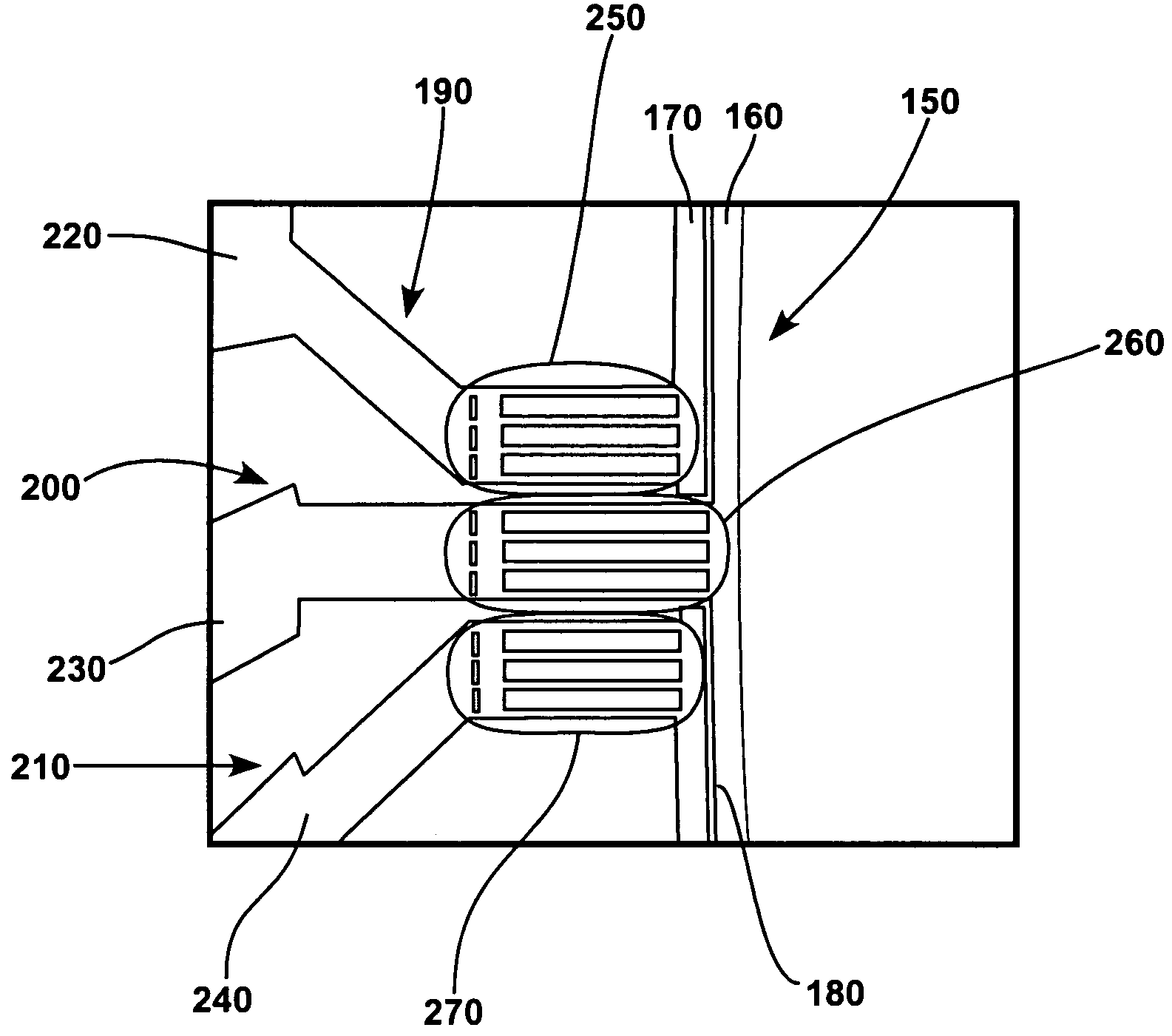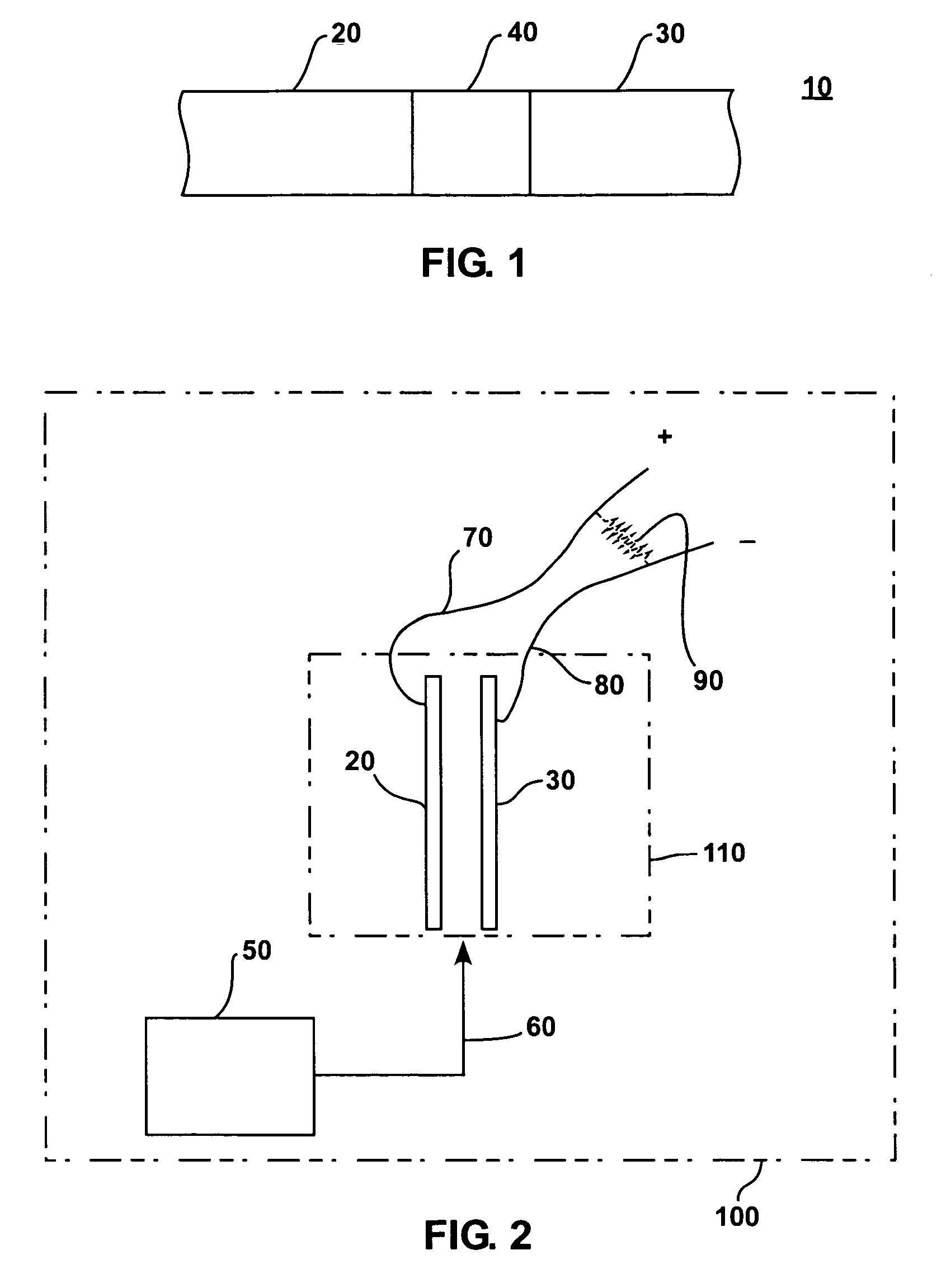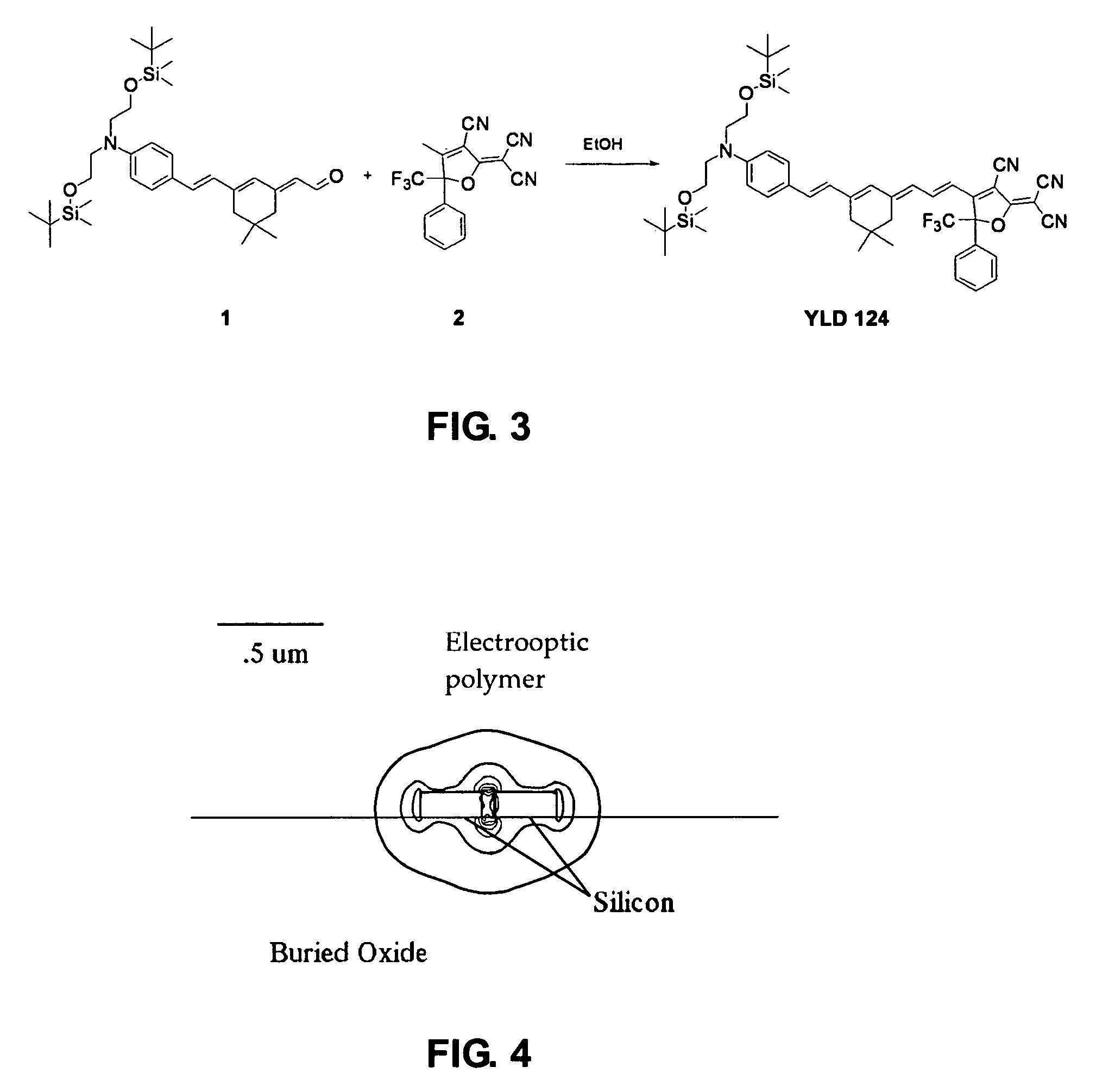Apparatus and method for detecting optical radiation
a technology of optical radiation and apparatus, applied in the field of waveguide structures, can solve the problems that the device based on nonlinear optical rectification does not suffer from the application of nonlinear optical rectification does not believe in the limitation of dark current, so as to achieve the enhancement of optical field, increase the effective electric modulation field, and increase the optical field.
- Summary
- Abstract
- Description
- Claims
- Application Information
AI Technical Summary
Benefits of technology
Problems solved by technology
Method used
Image
Examples
Embodiment Construction
[0031]FIG. 1 shows a schematic cross-sectional view of a slot waveguide in accordance with the present disclosure. The slot waveguide 10 comprises a first portion 20 and a second portion 30, together with a region 40 between the portions 20 and 30. The region 40 is filled with an electro-optic polymer, for example a χ2 material. The dimensions of the region 40 are preferably in the nanoscale range.
[0032]FIG. 2 is a further schematic view showing an arrangement of an optical detector in accordance with the present disclosure, where an input device 50 inputting an optical signal 60 is also shown, together with a measuring arrangement 70, 80 (e.g., electrical contact pads) to comparatively measure the electrical condition of the portions 20, 30 (e.g., to measure a voltage difference between the the portions 20 and 30). The detector can also comprise a device for confirming electrical contact of the contacts, e.g. a shunt resistor 90. The detector can be part of an arrangement 100, such...
PUM
 Login to View More
Login to View More Abstract
Description
Claims
Application Information
 Login to View More
Login to View More - R&D
- Intellectual Property
- Life Sciences
- Materials
- Tech Scout
- Unparalleled Data Quality
- Higher Quality Content
- 60% Fewer Hallucinations
Browse by: Latest US Patents, China's latest patents, Technical Efficacy Thesaurus, Application Domain, Technology Topic, Popular Technical Reports.
© 2025 PatSnap. All rights reserved.Legal|Privacy policy|Modern Slavery Act Transparency Statement|Sitemap|About US| Contact US: help@patsnap.com



